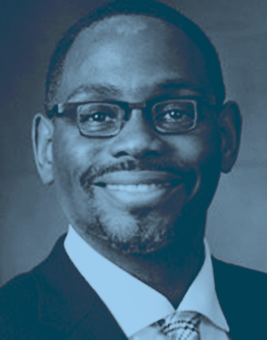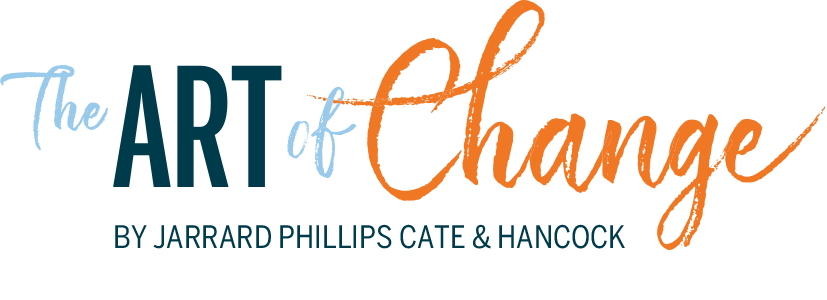
Health Equity: Actionable Perspectives from Health Systems
Since the 2020 murder of George Floyd ignited today’s revolutionary movement for racial justice, we’ve seen healthcare organizations equip their chief diversity officers with new tools and additional resources, ask CDOs and other leaders to help their teams navigate feelings on social justice and systemic racism, launch advisory councils, assemble working groups and make promises to change.
Commendable? Yes. Necessary? Absolutely.
But these actions can feel insignificant in the face of vast and deep-seated problems as ubiquitous as racism and healthcare disparities.

Williams
“It’s a journey,” said Jerome Williams, MD, MBA, senior vice president for consumer engagement at North Carolina-based Novant Health. “It’s not something where you’re going to flip a light switch, and suddenly you’re going to achieve health equity.”
Having spoken to community clinics and business disruptors for this volume of Art of Change, we also connected with health system leaders across the country about meaningful steps they’re taking to address long-standing health disparities that came into sharper focus during the COVID-19 pandemic. Some of their recommendations are immediate and concrete actions. Others will take longer. Each is impactful towards enabling health equity.
A Data Goldmine
“Technology is an enabler to health equity,” Novant Health’s Williams said.
We all know that step one to effectively addressing a problem, is identifying it and understanding it. And large healthcare providers have an opportunity to do just that – to track and solve for healthcare disparities by leveraging data from their expansive patient bases.
Novant Health uses the REAL GAPS (race, ethnicity, language, gender, age, payer and sexual orientation/gender identity) framework to identify and measure healthcare disparities in the communities it serves. Though a different context, it’s not unlike the approach we heard about from Kroger Health, which uses consumer data to help direct individuals towards appropriate shopping and health-related behaviors.
So when Novant Health data crunchers observed that Asian and Latino patients were lagging behind in mammography screening rates, the system set a targeted goal to increase screenings among those groups. Similarly, Novant Health is using predictive modeling to determine which cardiac patients are most at-risk for readmission, adjusting care and outreach accordingly to prevent it.
Relying on data is also a priority for Shara Wesley, DrPH, who runs the Wellstar Center for Health Equity based in Marietta, Georgia. The Center for Health Equity established six priority areas – including access to primary care, food insecurity and suicide prevention – based on data collected through its Community Health Needs Assessment.
Wellstar Health System then built a Community Health Dashboard to map health trends across zip codes and demographics against those six priorities.
During the COVID-19 pandemic, this technology enabled the Georgia health system to quickly identify hotspots for outbreaks and then respond by deploying large scale, mobile services to the hardest-hit communities. Offerings at the mobile sites included COVID-19 testing, safety kits and even lunches. The system will continue to leverage the dashboard technology post-pandemic to ensure healthcare – such as preventative cancer screenings – is delivered where it’s needed most.
The “Macro” and the “Micro”

Wesley
Wesley explained her approach to health equity at Wellstar through a dual strategy: the “macro” and the “micro.”
The macro is Wesley’s long game, which likely involves structural policy changes to the healthcare system itself. At the health system level, she said that means engraining a focus on health equity into the quality of care delivered to every person – for example, by ensuring that all of their caregivers and team members know how to deliver culturally appropriate care or to ask about housing status.
“It’s hard to shift an entire system,” Wesley said. “How do we move the whole organization in a way that we’re all considering the whole patient?”
While that important long-term work is underway, health systems should consider where they can be responsive to community needs and make a difference more rapidly on the ground – what Wesley calls the micro strategy. This is “where the rubber meets the road in the community. How and where we show up,” she said.
For example, Wellstar recently launched mobile markets that deliver fresh, healthy food to hundreds of patients and families living in food deserts.
“Everyone loves the mobile markets,” Wesley said. “It’s really fun – there’s a DJ, and people are getting fresh food and vegetables.” Meanwhile, the micro feeds the macro strategy by collecting data about participants’ food insecurity scores and dietary needs.
Make it Foundational and Tangible – For Everyone
For Novant Health’s Williams, it’s critical that health organizations make it clear that health equity is not a siloed “program.” It’s not an HR thing. A Community Relations thing. It’s not just “a project.”
“It’s about embedding those ideas, values and structures throughout the whole system,” Williams said. “It’s embedded in all 30,000 employees, it’s in every department and growing deeper and deeper.”
Part of bringing that commitment to life is ensuring that Novant Health’s mission, vision and values speak to that purpose. The health system has had Diversity & Inclusion as one of their five core values for many years, which has been invaluable in making it foundational to the organization’s identity.
In addition to the mobile markets, Wellstar Center for Health Equity is leading the charge to divert food waste from the health system’s facilities to families in need. In April, for instance, the program distributed dozens of pounds of frozen soup to families.
“If we’re really serious about addressing the food insecurity in our communities, we’re not going to throw good food away,” Wesley said.
Another major benefit of the food-waste initiative is that it involves more Wellstar team members in promoting health equity, further engraining it into the organization. Wesley cited the director of nutritional services at a hospital that’s collecting extra food to send to food-insecure neighbors as a perfect example.
“The gentleman in the hospital cafeteria, he probably never would have thought that part of his job would be building an equity strategy,” Wesley said. “Now he can be part of it.”
Listen and Learn
In February, SCL Health, a health system operating in Colorado, Montana and Kansas, partnered with dozens of community organizations to launch a mass vaccination event in Denver. It was specifically geared toward the area’s underserved Latino population. The event, though, drew criticism from a local community advocate, who worried it didn’t go far enough in offering resources for Spanish-speaking patients.

Alderfer
“When you get feedback that’s tough, that’s constructive, you can respond in a couple of different ways,” said Jennifer Alderfer, president of SCL Health’s Good Samaritan Medical Center. “You can become defensive, or you can lean in and really listen.”
SCL Health opted to lean in. All the way. The system hired that vocal community member as an internal consultant to improve future vaccine events. When patients returned for their second doses, the next event featured new signage, a recorded Spanish voiceover providing instructions for attendees, forms in both English and Spanish and more than double the number of interpreters.
“I’m so proud of what we learned as a health system and how we pivoted to better serve our communities,” Alderfer said.
Williams and Wesley agreed that listening to your community and adapting your approach as needed, is critical.
“We like to say that we want to strike quickly, and if we need to fail, fail quickly, look at the data and pivot,” Williams said.
When Novant Health opened a Michael Jordan Family Clinic in an underserved area, Williams said leaders engaged with the community on every decision from hiring a minority architectural firm to design the space to featuring pieces by community artists on its walls.
“It was a process of engaging the community, listening to the voice of the community through focus groups and understanding what the community wanted from their healthcare system,” Williams said.
Driving Equity Forward
From the macro to the micro level, large hospitals and health systems have the responsibility – and the power – to build health equity in the communities they serve. Understanding high level trends and developing large-scale approaches to care is necessary to create programs and policies that can produce a widespread impact. At the same time, the personal connection with individuals and communities is the only way to truly deliver care that delivers on what people – real people, not numbers on a page – need AND to use that individual information to inform approaches to create meaningful macro change.
As hospitals and health systems move forward toward health equity, they must be willing to try, learn and pivot. And then do it all again. It’s a journey.
